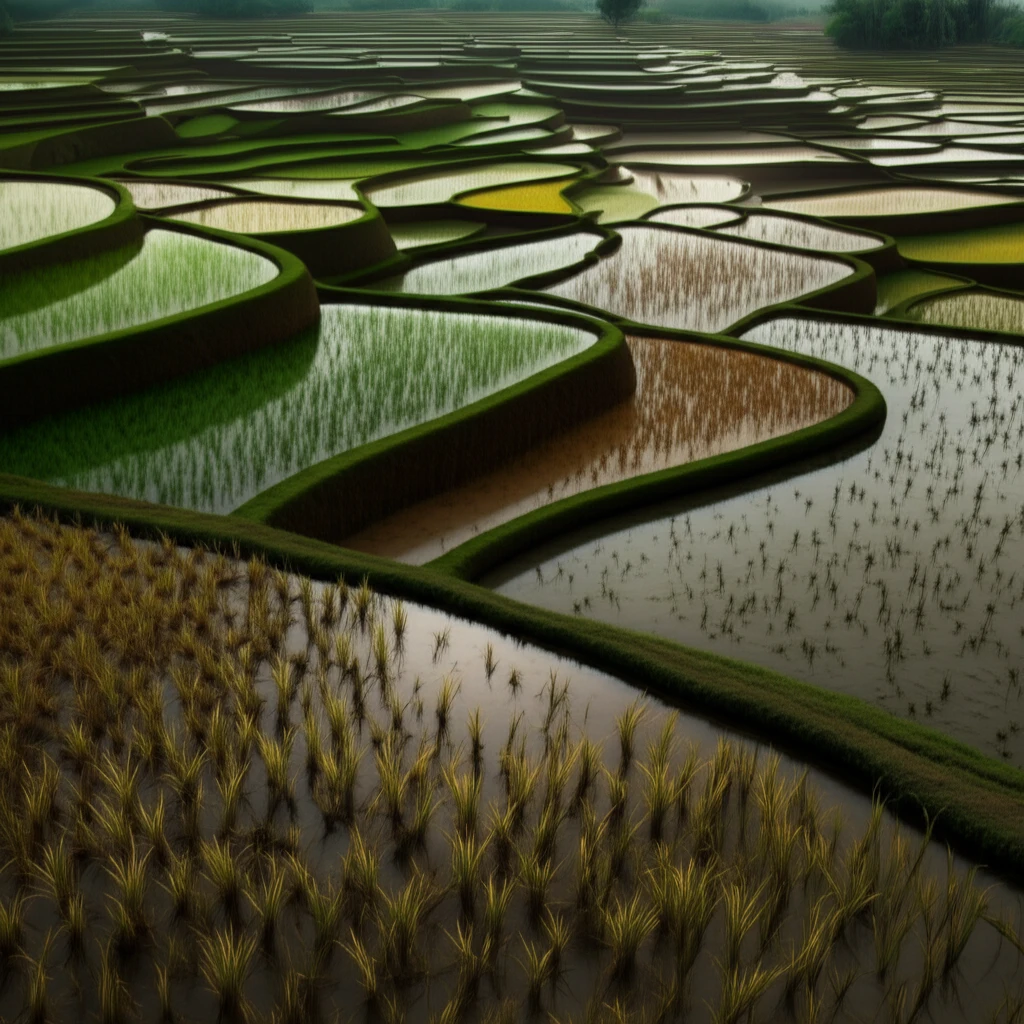
The Goldilocks Depth: Finding the Perfect Water Level for Your Rice Crop
"Unlock optimal rice growth and yield with the right water depth. Discover the surprising science behind water management for a thriving harvest."
Rice, an aquatic crop, thrives under specific water conditions. However, inconsistent water depths in paddy fields can significantly hinder growth and reduce yields. Variations in water level, particularly in large fields, demand a precise understanding of water management.
Why does water depth matter so much? It directly impacts various aspects of rice development, from root establishment and tillering to overall plant health. Ignoring this crucial factor in growth models can lead to inaccurate predictions of crop performance.
This article explores the impact of different water depths on rice crops. By understanding the optimal water levels for each growth stage, farmers can maximize their yield and improve water use efficiency. We'll dive into research-backed insights to help you achieve the perfect aquatic environment for your rice.
Decoding Water Depth: How Much is Too Much (or Too Little)?

Researchers at Nanjing Agricultural University conducted a controlled experiment to determine the ideal water depths for rice cultivation. The experiment was carried out in containers with a controlled drainage system. Four different water depths were tested: 5 cm, 10 cm, 15 cm and 20 cm, with each depth replicated three times to ensure accuracy.
- Early to Mid Stage (Vegetative): A water depth of 5 cm proved optimal for plant survival and height during the initial stages of growth.
- Root Development: Shallower water (5 cm) encouraged longer root growth, while deeper water (20 cm) restricted root development.
- Spike and Grain Weight: A 10 cm water depth resulted in the heaviest spikes and grains.
- Overall Yield: Despite the individual grain weight being highest at 10 cm, overall yield was negatively impacted by both excessive and deficient water levels.
The Takeaway: Tailoring Water Depth for Rice Success
The study reveals that optimal water management is not a one-size-fits-all solution. Different growth stages benefit from varying water depths. This research suggests a dynamic approach, adjusting water levels to match the rice crop's specific needs.
Based on the findings, maintaining a 5 cm water level during the vegetative and early reproductive stages, followed by a 10 cm depth during the later stages, can lead to the best results.
However, the researchers recommend further studies in open field conditions to validate these laboratory results and account for environmental factors. By fine-tuning water management practices, farmers can unlock the full potential of their rice crops and contribute to more sustainable agricultural practices.
